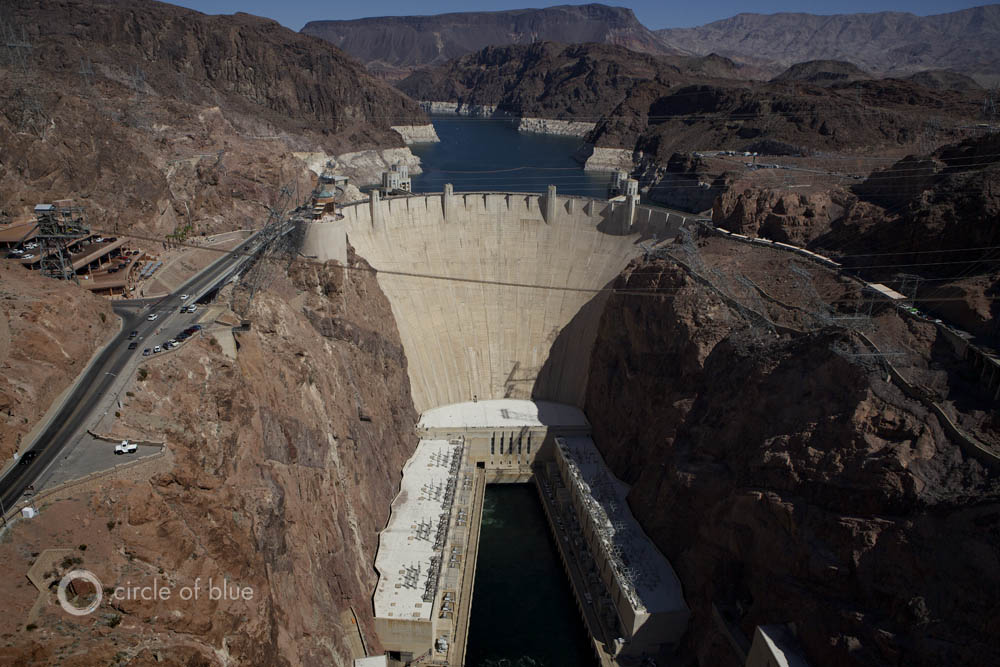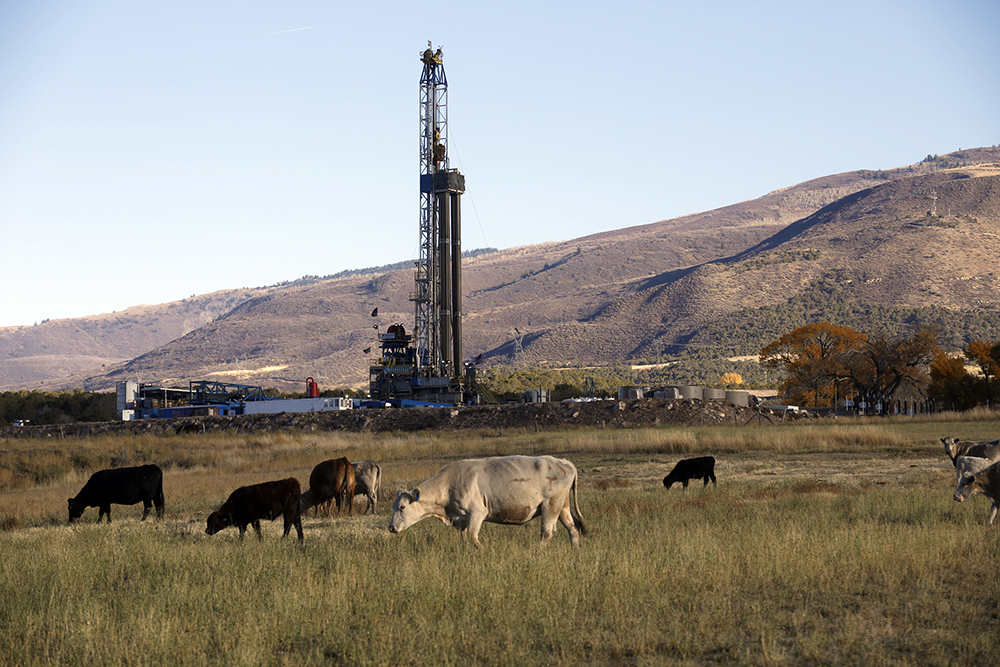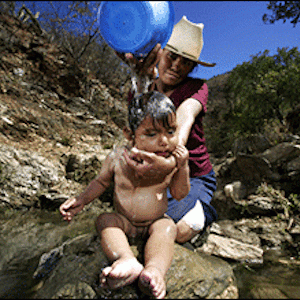Q&A: Raúl Garciadiego Helps Restore Access to Water in the Tehuacán Valley
By Andrew Maddocks, Circle of Blue
The people who inhabit Tehuacán Valley in southeast Mexico humanize one of the greatest global crises. Four years ago Circle of Blue explored the social, political and economic consequences of the region’s limited, contaminated water resources.
Raúl Hernández Garciadiego, Director General of the NGO Alternativas, has been a key figure in fighting these challenges. Garciadiego says the last several years have been filled with both progress and setbacks, including the loss of a major community organizer, Dona Francisca.
Today, Garciadiego says the Tehuacán county has some of the highest rates of cervical and breast cancer in the country, with four to five new cases reported weekly, according to local media. People in the area chalk this up as another affect of the area’s poor water supply.
Meanwhile, Alternativas has sought collaborative partnerships with CONAGUA, the National Water Commission of Mexico, and the Rotary Foundation, an international humanitarian nonprofit, to find tangible solutions for these compounded issues. As Garciadiego reflects on Tehuacán’s past, he looks forward the environmental future of Mexico as the country prepares to host the next United Nations Climate Change conference in November.
How has the Water Forever program within Alternativas fared since Circle of Blue’s last report?
This Water Forever program has been pushed by Alternativas, but been embraced by the villages. We have now served more than 200 villages with 200,000-plus inhabitants. Together we have built many water works. In December we had finished 2,119 projects that have built 7,500 water works of different sizes.
I say without false modesty that, after we received a Latin American and Caribbean award in 2005, we received a national ecological merit award. We also received national agricultural awards in 2005 and 2008 for our amaranth program. Because of all these recognitions we have been invited to make presentations to every one of the villages from the Bank of Mexico, the highest institution for financial rural development, to show them that there is a different way to address the water issues.
Now we have 350 people working full time, and we’ve become a major NGO in the country.
What is Water Forever’s strategy for water management?
We do not have to drill water wells and pump the water out. We need to take care of water flow all the way down the mountains to the valley in order to retain water and use it as first use.
An important piece of technology is biodigesters at the family level. Each family will not be connected to sewage pipeline. They will process their own family waste in a 2-cubic-meter biodigester facility connected to a small garden that acts as a filtering area where they can grow trees, gardens, vegetables, or whatever they want to have. That will be irrigated and biofertilized from the roots, so there will be no risk of contamination.
Our villages are committed to not throwing waste into water and not throwing waste into septic pipes that contaminate down stream. They are committed to a clean watershed. They made a proclamation: We commit ourselves not to contaminate water for all people located down stream.
We expect this to be recognized in the future as a hydrologic service.
Could you talk about the progress of amaranth grain as a crop in the region?
The growth of amaranth has been very impressive, 35 percent per year, while the country’s gross national product has grown by four percent. More people are enthusiastic about it, especially since it was an ancient crop from Popolocas and the Aztecs. It’s been traced to very early conversations among missionaries and wise people of Indian groups.
Nutritionists and scientists say it has the perfect amino acid balance. So, we started a nutrition program to detect how many indigenous children are undernourished by measuring their height and weight. As an intervention we provide each one of these kids one amaranth food.
With only 25 grams per day in five months we have seen an 87 percent rate of recovery to normal weight and height.
Now we have food, the opportunity to sell amaranth, and many families are working in the agroindustry. It now provides full employment to 54 people with Social Security benefits and all.
The cooperative is a very important thing for the families because as they are members, they can suggest that their young sons and girls be hired by the cooperative.
How are your water and amaranth programs connected?
This is so important because the combination of water and amaranth is raising the level of hydrologic, food, ecological and economic security of our families through income generation. This is why both programs are so tied together from our perspective.
We found amaranth in 1982 while researching. We soon started getting and planting seeds because it required less water. Nowadays we see both programs are very strong, working together to have more water availability
How much as the Quali cooperative developed during these years?
We tried in the last two years to open a new food factory for the Quali co-op group. We have organized it to produce amaranth food that is a very nutritious, high protein cereal. Our factory was located on the outskirts of the city of Tehuacán in San Lorenzo.
But the space was not enough. We decided to move, and we went to the upper valley — where Doña Francisca Rosas Valencia — was living, to try to find a place to locate this new agro-industry.
It took one year of work to test all available places where we could establish the agro-industry.
It was very sad to see that the whole upper valley was contaminated. When we didn’t find bio contamination from chicken farms we found chemical contamination in the water table. After one year, we saw that it was not safe to establish this food agro-industry here.
We had to go to the down valley of Tehuacán. We did find a place suitable for this new agro-industry there. We started searching in 2008, and started construction on the new factory in 2009.
What other challenges facing the upper Tehuacán Valley might be connected to contamination?
The cancer illness in our region has increased at a much higher rate than the national cancer incidence. The people in the health sector attribute this high increase of water contamination due to maquiladoras (garment assembly plants) washing the denim trousers, which is contaminating.
There are many heavy metals contained in the dies that now are in the water. And there have been many attempts of pursuing a study showing the direct correlation between this contamination and cancer incidence. But I don’t have a figure, only opinions from oncologists who say it’s something to worry about in our region.
Some of the people say the contamination is from the waste from chicken farms instead. They just leave it to float in the open to dry. The sun and the wind dry the waste until it becomes [particulate matter], and we breathe it in.
And what about Dona Francisca, we heard she was ill?
She passed away. She was diagnosed with cervical cancer in 2008.
She was a tireless, selfless leader. She was always helpful even though she was so so poor because her husband abandoned her with all of her kids. She had to struggle all by herself to make a living, yet she still found time to encourage other women around her to organize, work, send their kids to school and so on. She was a very energy-contagious woman.
Whenever you were with her, she was smiling. She earned a lot of support in villages for the cooperative even before we knew she had cancer.
In 2006 she met with 5,000 other small farmers from every corner of the world in Torino, Italy: invited by slow foods movement. She was so excited to see that, even in her poverty, she had a lot of things to share and to be proud of. She could motivate others to do things if they took matters seriously into their own hands.
When we heard she was ill, we were all very shocked and very sad. We didn’t understand the Lord’s decision to invite her to the sky.
It was a very hard shock for each one of us when she passed away.
What kind of legacy did she leave behind?
She led a very full life, and set a very strong example. She increased peoples’ interest in water works and in amaranth food production for their families.
Her example as a woman was also very important. It is so difficult in Mexico facing three handicaps—being indigenous, being a woman and being poor.
This particular woman had a fourth handicap as a single mother with nine kids. She was a very strong image for all who worked with her. She showed us that we have no right to complain about anything that we face. When we watched this woman facing all these very, very adverse environmental, social and economic conditions she didn’t complain.
She always thanked everyone for being supportive to her initiatives.
She also became an icon for the slow food movement. She said, as a healthy food for our children, amaranth should be our first choice. It is easy to digest and nutritious. It’s well worth it to accept the Quali proposal and working groups, in order to learn to cultivate amaranth, not only for private use but also for sale.
.
Has inequality between water-rich and poor districts been an issue in the valley?
The population is increasing, but water sources are decreasing. So the problems nowadays are worse. You hear more about conflicts among cities or counties. In much of the valley the water balance has already been reached or broken. The water table is going down every year. There are no new permits for villages to drill wells to provide water to increasing populations that are coming to live in cities and near highways.
Currently there is a strong conflict between Tehuacán County, the most powerful in this region, and neighboring Nahuatlan county, which is higher in the valley watershed. Tehuacán valley got permission to take pipe from Nahuatlan to Tehuacán City.
The villagers and inhabitants were against this because Tehuacán is consuming far more water than needed. We will not allow this pipe to pull water out.
What is your overall vision for watershed management in Mexico?
If we use a sound ecological approach to management with household water use, drip irrigation, and low-cost water treatment at the home level, we’ll have an ecologically sustainable future for water management.
The hydrological approach — drilling, pumping, delivering sewage to water treatment — is too costly to be effective in the majority of cases. Tehuacán City now has more than 300,000 inhabitants, and it hasn’t been able to set up its first water treatment plant. It’s so costly that even such a huge population is just simply throwing out wastewater to contaminate downstream.
We should have had this plant working, by law, since 2005. That was the deadline for a national water law obligating all cities of more than 50,000 people to have water treatment plants. In most cases in our country there’s not enough money to build plants. In some cases municipalities don’t have enough money to cover the cost of electricity once plants are built, so plants are not working. Now we have at least five years delay in these water treatment plants.
Even if we are the tenth-largest economy in the world, Mexico doesn’t have the resources to successfully operate a costly water management model that is being set all over the world.
But our message is getting through.
You were just starting construction on an expanded water museum the last time we traveled to your valley. How’s that coming along?
It has been a very successful project because we decided to put it along the highway that connects the city of Tehuacán with south and southeast Mexico. Thousands of people pass along this highway, so the water museum and all the water features that are already built there are very visible.
We are receiving on average about 1,000 visitors per month. They’re coming from everywhere, from villages to universities. It has been a very useful way to communicate how people have to be organized at the village, micro-sheds and tributary watershed level. We’re also building an auditorium and training facilities for people interested in where find people to work how to manage the accounting and maintain accountability.
We see the wide interest in people coming to see how we’re doing, and wanting to replicate it.
How receptive has the government been? What role have they played?
We have a very good relationship with CONAGUA (might also want to include a mentionof CONAGUA in the intro). They allow us to do all these water works, but we’re not being sponsored or financed by them.
The pumping and piping they do is very far from what we do. We get a little money from SEMARNAT — the department responsible for developing environmental policy and legislation in Mexico.
Another problem with CONAGUA is that water is business, a very big business. So business is a motivation in continuing a model that is already hegemonic.
But they do not understand the ecological approach. All their programs, all their financial regulations and financial decisions, it all revolves around doing water works, piping, sewage and treatment.
They clap, but they don’t change.
What are your next steps?
I presented at a Rotary Club meeting in Chihuahua with 350 Rotary district representatives last week. They are willing to understand the new approach. They might be able to participate in financing and organizing water in their own region of influence.
The meeting was called because the Rotary Foundation will be focusing on water in next years. This is an important thing, and I’m still learning about their proposal. I believe they are searching for models of intervention, and are willing to finance initiatives in poor areas all over the world.
It’s important to note that, after Copenhagen, this year’s United Nations climate conference will be in Mexico City. The eyes of the world will be here in the month of November.
Andrew Maddocks is a reporter for Circle of Blue. Reach Maddocks at circleofblue.org/contact and catch more of our Tehuacán coverage here.









Leave a Reply
Want to join the discussion?Feel free to contribute!